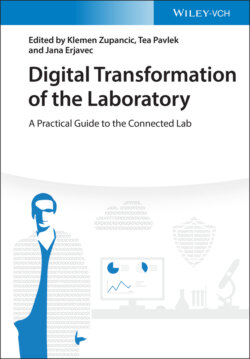Читать книгу Digital Transformation of the Laboratory - Группа авторов - Страница 18
1.2.4.1 Data in the Hypothesis‐driven, Research Lab
ОглавлениеIn a pure research, hypothesis‐driven lab, whether it is in life science, chemical science, or physical science, there is a fundamental, cyclical process operating. This process underpins all of scientific discovery; we refer to it as the “hypothesis‐experiment‐analyze‐share” (“HEAS”) cycle (see Figure 1.3) or, alternatively, if one is in a discovery chemistry lab, for example a medicinal chemistry lab in biopharma, DMTA (see Figure 1.2).
The research scientists generate their idea/hypothesis and design an experiment to test it. They gather the materials they need to run that experiment, which they then perform in the lab. All the time they capture observations on what is happening. At the end they “workup” their experiment – continuing to capture observations and raw data. They analyze their “raw” data and generate results (“refined” data); these determine whether the experiment has supported their hypothesis or not. They then communicate those results, observations, and insights more widely. Ultimately, they move on to the next, follow‐on hypothesis; then, it is off round the cycle they go again until they reach some sort of end point or final conclusion. All the while they are generating data: raw data off instruments and captured visual observations and refined data, which are more readily interpretable and can more easily lead to insights and conclusions.
Figure 1.3 Hypothesis‐experiment‐analyze‐share (HEAS) cycle.
